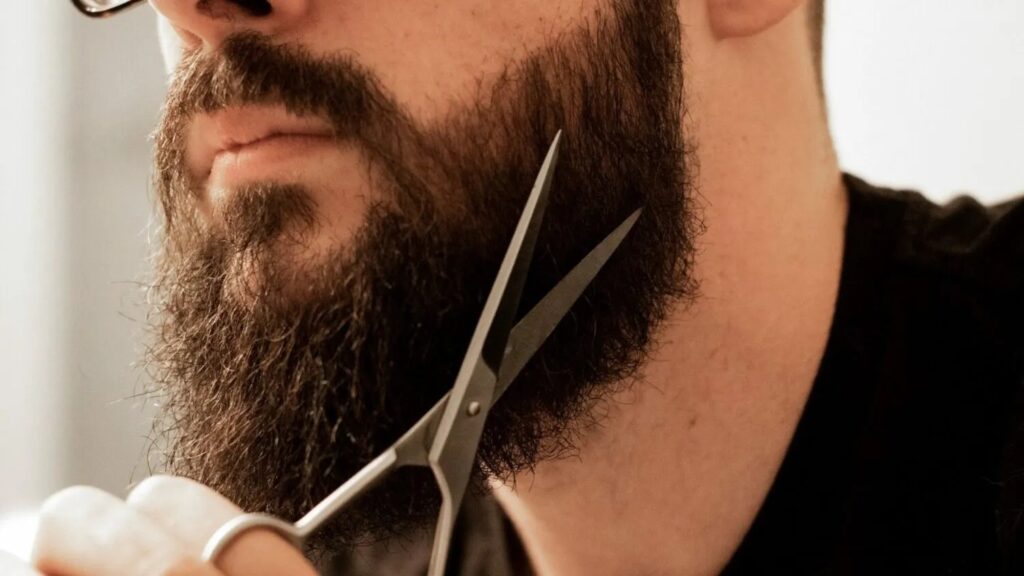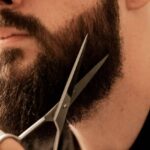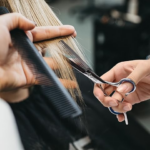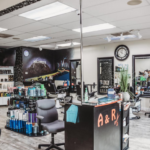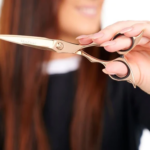Facial Hair Scissors – Grooming Guide
When it comes to grooming your facial hair, the thought of using scissors might seem a bit old-fashioned in this era of electric trimmers. However, facial hair scissors can be a lifesaver when your trusty trimmer breaks down, or when you need a quick touch-up. What’s more, they offer the advantage of delivering a more natural look, as if you woke up with a perfectly groomed beard. This method is especially versatile as it can be applied to facial hair of all sizes, whereas trimmers are more suited for stubble and shorter beards. In essence, mastering the art of using facial hair scissors is an essential skill for any beardsman.
A well-executed trimming session can keep your facial hair looking sharp for a couple of weeks, and in some cases, even up to a month. So, let’s dive into the world of facial hair grooming with a quality pair of scissors and a sturdy comb. Here’s how you can achieve a perfectly groomed look:
1. Begin with a Clean and Dry Beard
Before you start trimming, ensure that your beard is completely dry. Trimming wet facial hair can lead to inaccurate results because water can weigh the hair down, making it appear longer than it actually is.
2. Combing Your Beard

Start by combing your beard downward, following the natural direction of hair growth. This initial step allows you to see the shape you’re working with. Then, comb your beard upwards and outwards, against the grain. If your beard looks a bit fluffed up and unruly, you’re on the right track. This technique helps to loosen the hair, making stray, fast-growing hairs more noticeable. It also allows you to identify areas that may need more attention.
3. Trim One Side at a Time
Select one side to begin with and use your comb as a guide. Run the scissors at a slight angle along the comb, trimming any hair that extends beyond it. Start by snipping off the tips, and remember, you can always trim more if needed. Emulate the gentle, quick clipping motion that a barber uses for a precise and even trim. Ensure that you maintain the same amount of hair sticking out from the comb’s teeth with each trim. Repeat the process on the other side for symmetry.
4. Don’t Overlook the Mustache
Straighten your mustache hair by combing it downward, and remove any hair that hangs below your lip line for a polished appearance.
5. Pay Attention to the Neckline
For a seamless transition from your beard to your neck, employ a beard trimmer to create a gradual fade. Use your facial hair scissors for detailed touch-ups and adjustments.
6. A Final Quality Check
After the initial trimming, comb through your beard and carefully inspect for any stray hairs or uneven sections. This step ensures that your beard looks impeccably groomed.
7. Post-Trimming Cleanup
Wash your beard once more after completing the trimming session. This step helps eliminate any cut hairs, preventing them from ending up on your pillows, in your food, or on your significant other.
8. Rehydrate and Nourish
Maintain the health and appearance of your freshly trimmed beard by replenishing moisture. Finish by applying a few drops of beard oil, evenly distributing it through your facial hair with a comb or a beard brush. Not only does this provide hydration, but it also helps prevent skin irritation, particularly during the early stages of beard growth.
Facial Hair Scissors to Use
In conclusion, mastering the art of trimming facial hair with scissors can be a game-changer for your grooming routine. While electric trimmers have their place, there’s something satisfying and authentic about crafting your beard with precision using the timeless tools of facial hair scissors and a comb. Follow these steps, and you’ll achieve a natural, well-maintained look that exudes confidence and style. So, grab your scissors and get ready to transform your facial hair grooming routine into an art form.
Related: CUTTING MEN’S HAIR WITH SCISSORS – A STYLISTS GUIDE

